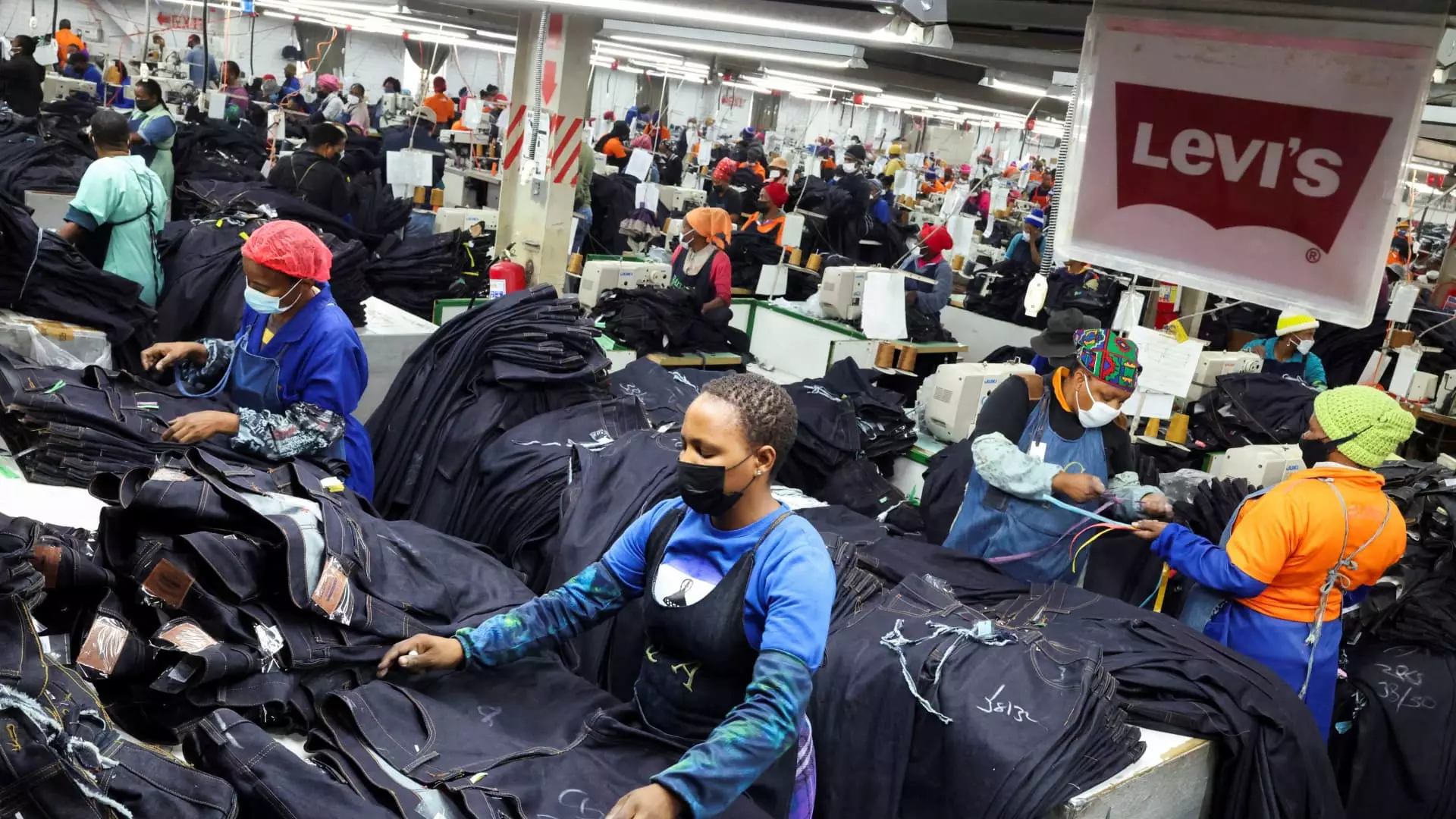In an era marked by escalating trade disputes and unpredictable tariff policies, Levi’s recent financial results and strategic stance reveal a company trying to maintain its footing amidst chaos. While the denim giant has recently upwardly revised its yearly guidance, this optimism appears fragile, dependent on an uncertain political climate. The company’s push to absorb tariff-related costs exemplifies a pragmatic approach—yet it also underscores a dangerous reliance on a delicate balancing act, which could backfire if trade policies shift suddenly.
The core issue lies in the unpredictable nature of international trade under the current U.S. administration. Levi’s predominantly sources from South Asia, a region increasingly threatened by aggressive tariff threats from President Trump. Notably, countries like Bangladesh, Indonesia, Pakistan, and Vietnam—integral to Levi’s supply chain—face potential tariffs exceeding 30%, introducing a significant risk to cost structures and profit margins. The company’s optimism about its earnings outlook seems overconfident when faced with these geopolitical uncertainties; the assumptions embedded in their forecasts are based on current conditions, which could change without warning.
Levi’s decision to absorb tariff costs—targeting a buffer of $25 to $30 million for the rest of the year—may seem courageous on paper. Yet, this strategy could prove short-sighted, especially if tariffs escalate or if trade relations deteriorate further. Relying on the current political environment, which is anything but stable, jeopardizes long-term profitability. The company’s leadership appears to be trying to mask the inherent vulnerabilities of postponing price hikes and cost passing onto consumers, asserting that their “strong business” can handle this pressure. But resilience in a market increasingly driven by geopolitical volatility should not be mistaken for invincibility.
Strategic Shifts and the Illusion of Adaptability
Levi’s recent financial performance, however, offers a silver lining that may be more illusion than reality. The company exceeded Wall Street’s expectations with strong earnings and revenue growth in the recent quarter, driven by innovative product lines, a focus on direct-to-consumer channels, and targeted marketing campaigns like the Beyoncé collaboration. This highlights an undeniable strength: the company’s ability to adapt and innovate rapidly in a competitive retail landscape.
Yet it’s worth questioning whether these tactical successes can be sustained amid mounting trade headwinds. Levi’s decision to pivot toward higher-margin direct sales and push premium pricing strategies is timely, but it risks alienating price-sensitive demographics, especially if tariffs inflame costs further. Moreover, the company’s move away from wholesale partnerships—while justified from a margin perspective—limits its distribution flexibility and exposes it to the risks of consumer discontent or shifting preferences. When the economic outlook is fragile and inflationary pressures threaten household budgets, a focus on premium positioning might backfire, eroding the very consumer base Levi’s seeks to expand.
Furthermore, the sale of the Dockers brand signals a strategic retreat from certain market segments, implying a push toward core, more profitable areas. Whether this yields sustainable growth or results in a narrower, less resilient business remains to be seen. The company’s investments in campaigns like the Beyoncé collaboration suggest a focus on intangible assets—brand relevance and cultural cachet—rather than fundamental supply chain robustness. While such initiatives can generate buzz and short-term sales, they won’t offset the structural vulnerabilities exposed by escalating tariffs and geopolitical turmoil.
Center-Left Perspectives: A Cautionary Tale of Overconfidence
From a centrist liberal viewpoint, Levi’s recent moves showcase a commendable attempt at resilience and innovation, but they also serve as a cautionary tale about overreliance on market agility in the face of macroeconomic headwinds. The company’s effort to buffer costs internally—by pulling back on promotions, limiting markdowns, and raising prices—reveals a strategy rooted in short-term resilience rather than addressing systemic vulnerabilities. Such tactics risk deepening consumer dissatisfaction if inflation and job insecurity rise across the broader economy.
There’s an underlying implication that a company’s strength can withstand the storm of unpredictable tariffs and trade wars. This is a dangerously optimistic assumption. The American economy, and indeed the global economy, thrives on stability and fair trade—variables that current policies threaten to undermine. Levi’s, as a symbol of American manufacturing and international business, embodies this contradiction: it operates within a globalized supply chain that is increasingly at risk from nationalist strategies.
Politically and economically, policymakers should learn from Levi’s experience. The hope that companies can simply absorb shocks or maintain growth through consumer loyalty is naive; it underscores the urgent need for a coherent, principled trade policy that prioritizes stability and fair cooperation. Levi’s attempts to stay afloat by pushing innovation and brand relevance are vital but insufficient. Long-term sustainability requires policymakers to step back from brinkmanship, fostering an environment where companies are not forced into defensive strategies and fiscal gamesmanship.
In sum, Levi’s current trajectory—while impressive on the surface—must be viewed skeptically. It is a fragile balancing act that exposes the weaknesses of a corporate system heavily dependent on predictable trade conditions. If policymakers continue down this path of tariff escalation and protectionism, Levi’s and countless others will face more profound hardships, risking a future where resilience is not enough, and strategic realities demand a broader, more cooperative approach to international trade.


Leave a Reply